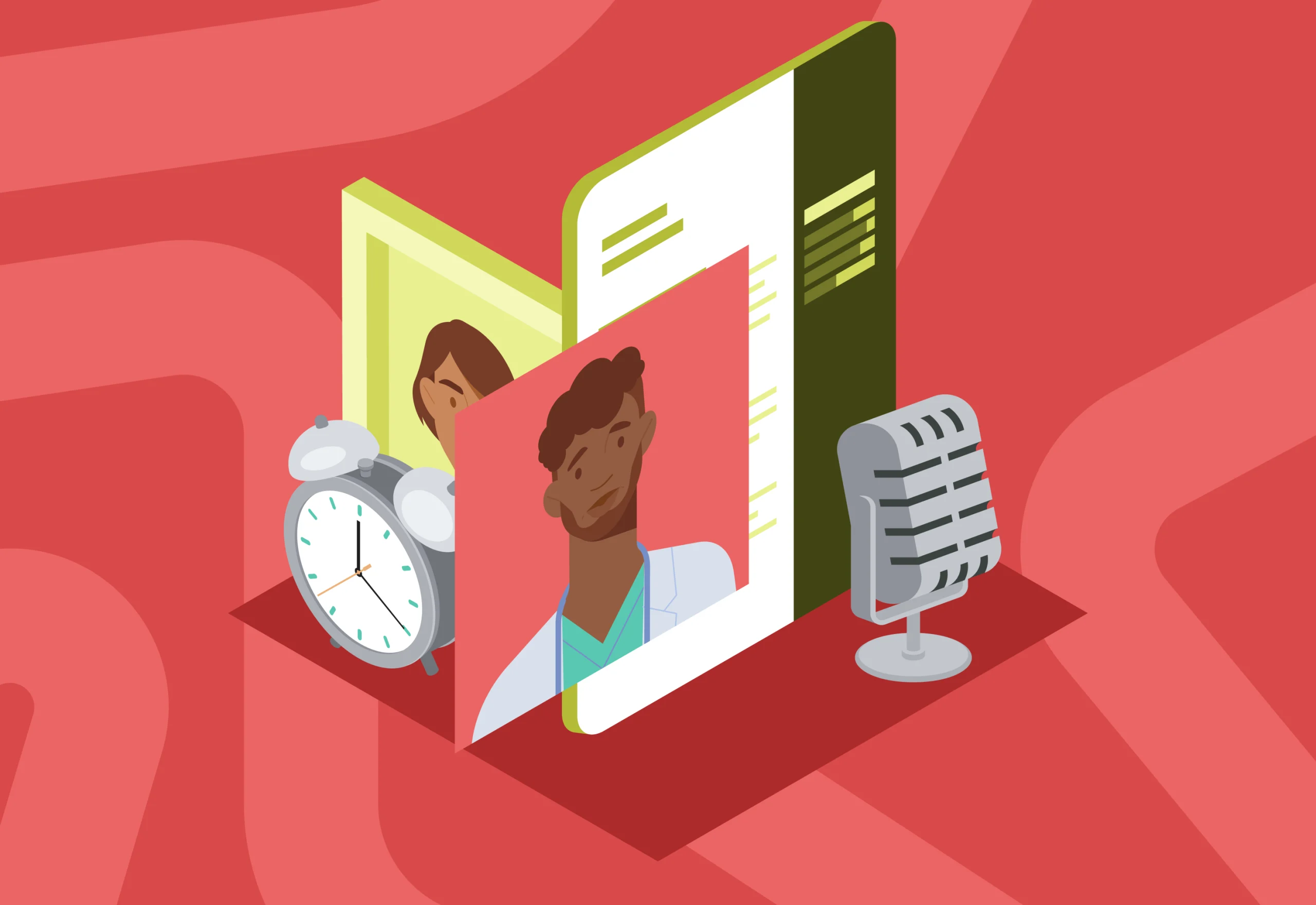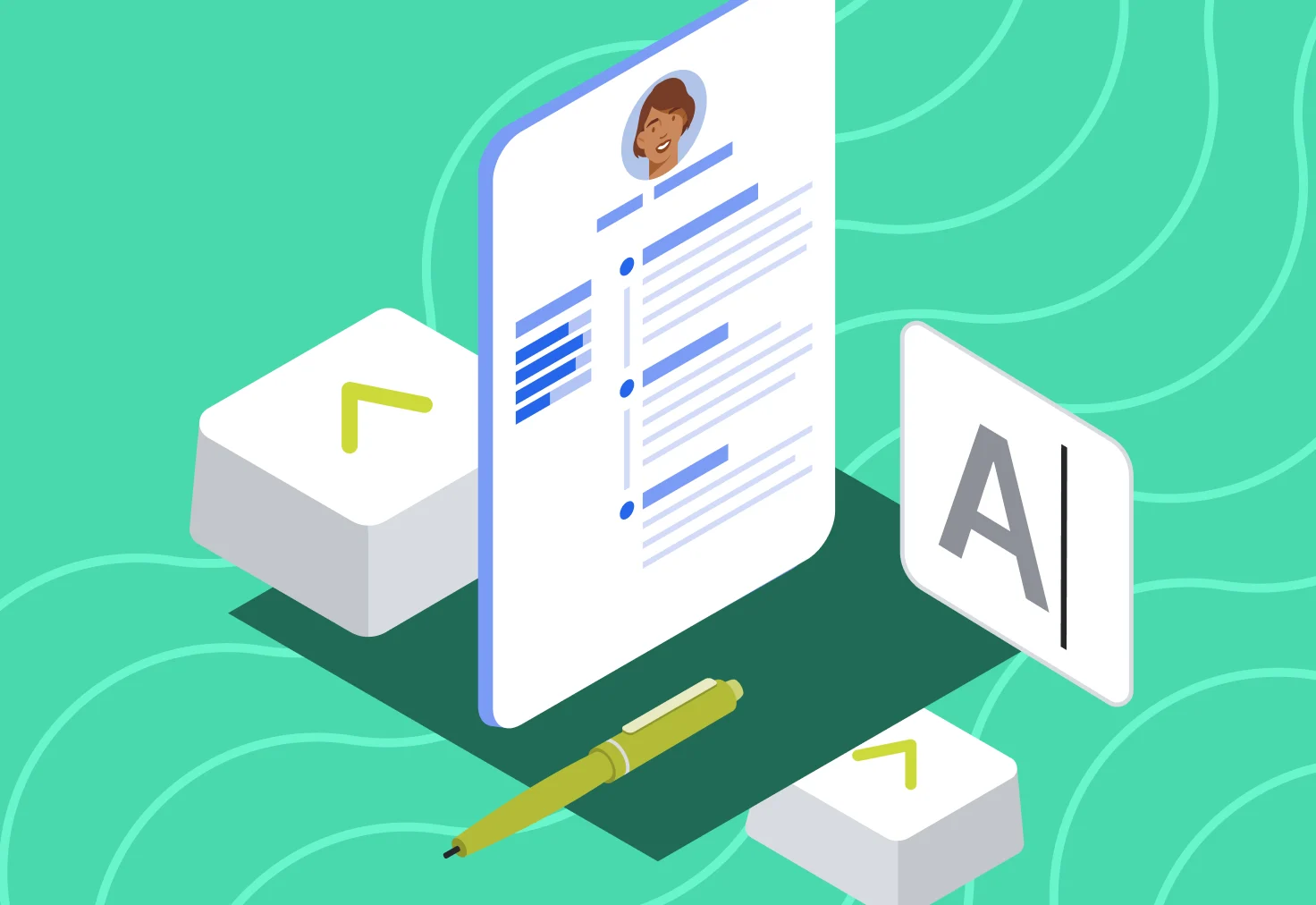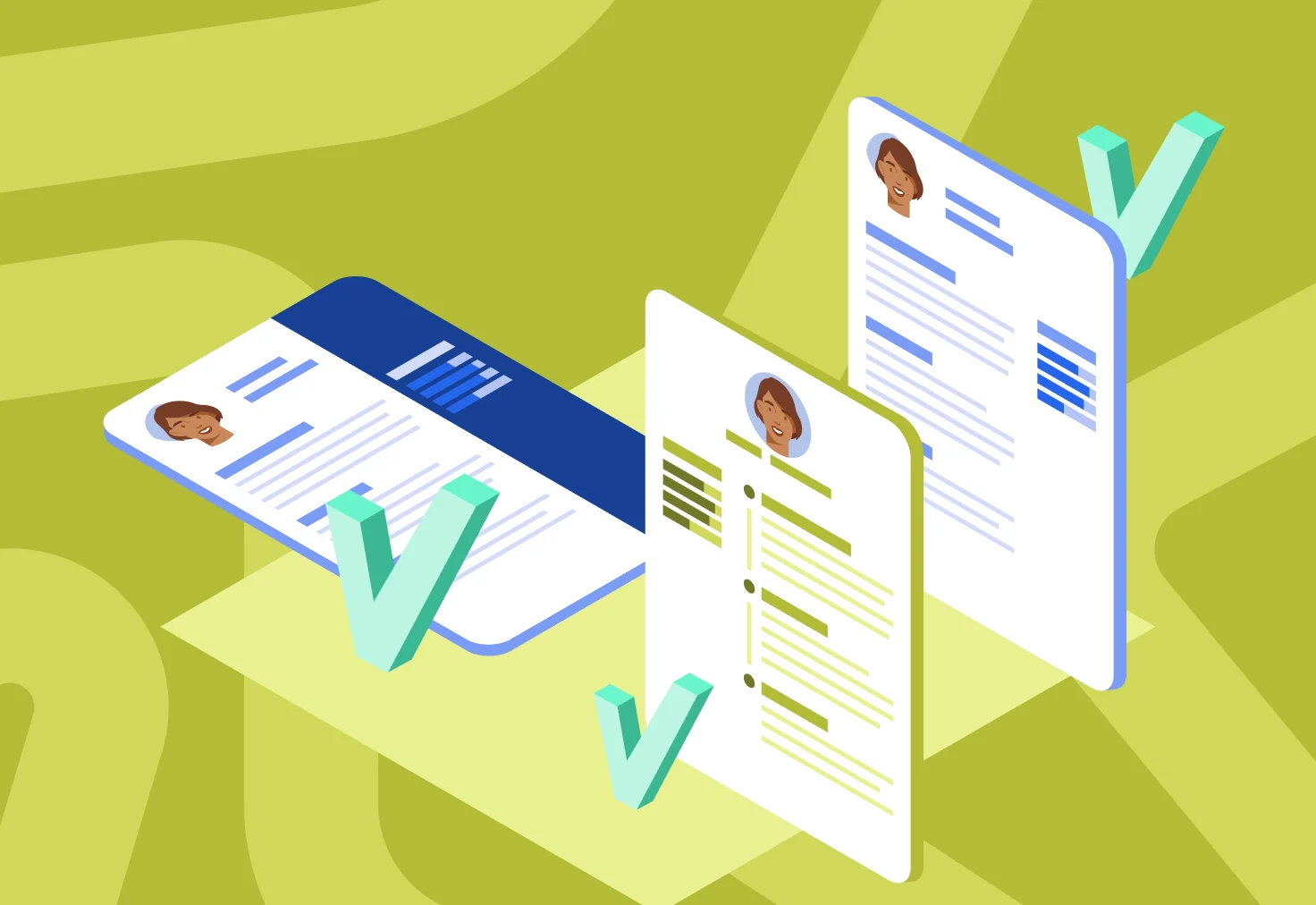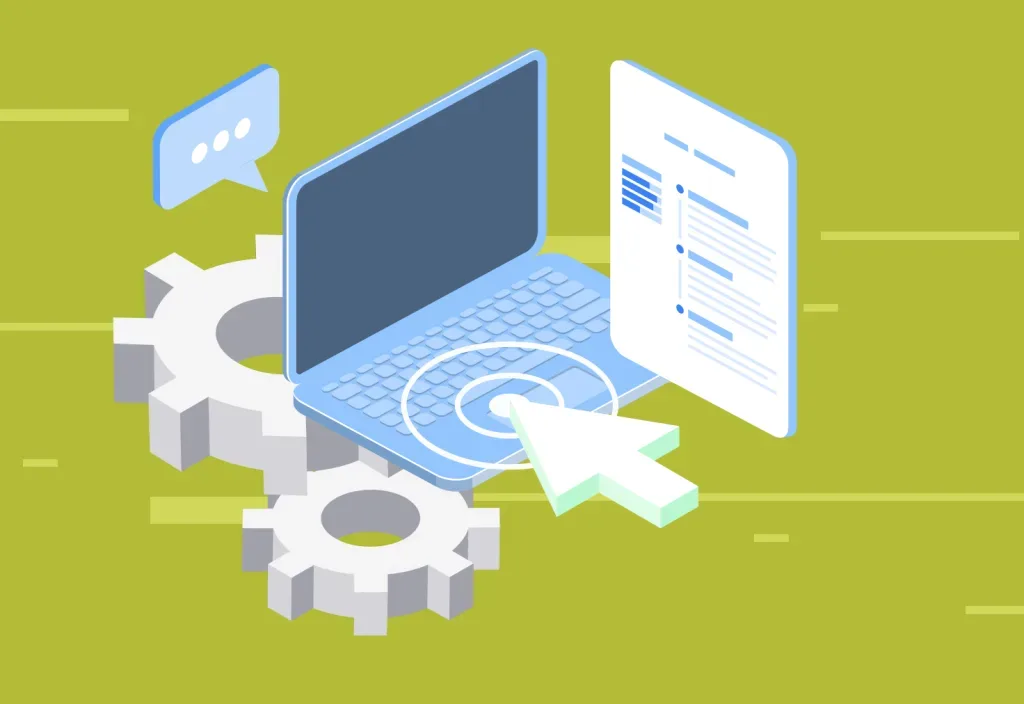As a receptionist and the first point of contact for callers and visitors, you know that first impressions are everything. That’s why it’s crucial to have a killer receptionist resume when applying for a new job.
You want to showcase your skills and experience in such a way that they attract the attention of potential employers, make them remember you, and secure you an interview.
Luckily, there’s a surefire way to create an exceptional receptionist resume and stand out from the competition, and we teach you how to do it in this article. Let’s get started!
Key Takeaways
The chronological resume format is the best for most candidates. Functional and combination formats are also great choices for specific situations.
Your resume should be one page long in most cases.
A strong objective or summary can persuade recruiters to keep reading your resume.
Mandatory sections make up the core of your resume, while optional ones can help you stand out.
What is the Right Format to Use for a Receptionist Resume?

One of the most important aspects of your receptionist resume is its format. It represents the way you organize information to make it neat and presentable. This facet of resume building is crucial, as many recruiters spend less than 10 seconds skimming through resumes before deciding whether to keep reading or move on to the next one.
That’s why you want to use one of the tried-and-true methods of arranging details in your documents in an optimal way. These formats are the ones recruiters are familiar with, so they’ll know where to look on your resume to find what they want.
The most popular resume format by far is the chronological one, which works well for the vast majority of candidates with a steady work history. It’s structured in such a way that it emphasizes your latest job and accomplishments while listing the rest in reverse-chronological order. Such a simple and elegant approach makes this format ATS-proof as well.
Another popular format for your receptionist resume is the functional resume format. This one is commonly used by entry-level applicants or those who have large employment gaps in their work history. In essence, the functional format showcases your skills, drawing attention away from a potential lack of professional experience.
If you’re a senior professional who wants to highlight both their extensive experience and a valuable skill set, you can go with the combination or hybrid resume format. It combines parts of the chronological and functional formats so that skills are the main section and professional accomplishments support them.
Resume Layout

While a format has a functional role for your resume, a layout represents its visual aspect. Since we’ve already established the importance of first impressions, it’s safe to assume that this facet of the resume-building process is crucial.
The goal of a resume layout is to make your resume look clean and professional, with distinct sections and easy-to-interpret information. It’s also vital for your receptionist resume to be one page long. Unless you have decades of work experience, recruiters likely won’t want to spend time going through numerous pages of your documentation.
Useful Tips
Here are some other tips and guidelines that can help you nail your resume layout:
White space between sections and 1-inch margins on all sides will ensure a visually solid structure.
To convey more information while using less text, you should include bullet lists instead of paragraphs whenever possible.
Since most of your resume is text, you want to pick a neat and readable font, such as Cambria or Arial. You should steer clear of overly-complicated and decorative typefaces.
Consider making your regular text 10–12 pt, with 14–16 pt for section headers. That will create a visual hierarchy and ensure that all the sections are distinct.
What Sections Should a Receptionist Resume Contain?

Now that we’ve learned about the format and layout, let’s see what information deserves a spot in your resume in the first place. There are two types of sections a receptionist resume should contain:
Mandatory
Optional
Mandatory Sections
Mandatory sections make up the foundation of your resume, and they are:
Contact information
Resume summary/objective
Work experience
Education
Skills
Optional Sections
Optional sections allow you to personalize your resume and include additional important information to help you stand out from the crowd. There are many optional sections that you can add to your document, including:
Awards and certifications
Languages
Hobbies and interests
Now that you know the parts that your resume needs to have, you can put together an outline and start from there. But what if we told you there’s a much easier way to write a professional receptionist resume?
Instead of downloading a sketchy resume for a receptionist in Word format online or creating one from scratch, we invite you to try out our online resume builder. This software is a one-of-a-kind solution to all of your resume-writing problems. It has an easy-to-use interface and powerful features that make the process smooth and easy.
You can pick a submission-ready template from our extensive collection, change everything from font to colors and sections with one click, add your information in predetermined spots, and download a finished resume in minutes!
As an example, here’s just one of the countless resume templates that you can find in our galleries.
Receptionist Resume Template
Name and Surname
Phone number: 000-000-0000 | Email: namesurname@gmail.com | Location: City, State
[Adjective] [your job title] with [years of experience, if applicable] in [your area of expertise, if applicable] looking for a [position] job at [company name]. Eager to apply [relevant skills] gained through [work/volunteer/other experience] to help [company name] [mention what you can do for the company].
Work Experience
Most Recent/Current Job Title Company City, State [Start date] — [End date]
For recent jobs, use 5-6 bullet points to list your top achievements and responsibilities
Use action verbs to make your responsibilities and achievements stand out
Add numbers to quantify your achievements
Previous Job Title Company City, State [Start date] — [End date]
For recent jobs, use 5-6 bullet points to list your top achievements and responsibilities
Use action verbs to make your responsibilities and achievements stand out
Add numbers to quantify your achievements
Oldest Job Title Company City, State [Start date] — [End date]
For older jobs, use 2-3 bullet points to list your top achievements and responsibilities
Use action verbs to make your responsibilities and achievements stand out
Add numbers to quantify your achievements
Education
[Degree] in [Major] [University/college name] [Start date] - [Graduation date]
Skills
Soft Skills
Skill #1
Skill #2
Skill #3
Skill #4
Skill #5
Hard Skills
Skill #1
Skill #2
Skill #3
Skill #4
Skill #5
Additional Sections
Add any relevant additional sections (languages, licenses, publications, hobbies, etc.)
Resume templates
Resume templates that are designed to help you win a jobReceptionist Resume Contact Information

In the contact information section of your receptionist resume, facts and accuracy are more important than creativity and originality. It’s a purely functional part of your resume that needs to give recruiters a way (or two) of contacting you. Here are the details to include:
Contact Information Mandatory Details
Your full name
Phone number
Email address
Optionally, you can also add the following:
Contact Information Optional Details
Your location
LinkedIn or relevant social media profile
Now let’s see all that in an example:
Contact Information Example
Patricia Beverly
Receptionist
+ 850 238 4787
patriciabeverly@example.com
linkedin.com/in/patriciabeverly33
To ensure that you didn’t make any typing mistakes, you should thoroughly proofread this part. You don’t want a misspelled phone number on an otherwise stellar resume.
Another thing to keep in mind is that your job title also acts as a keyword for the ATS. That means that it should match the title listed in the job ad (e.g., “receptionist,” “front desk receptionist,” “medical receptionist,” etc.).
Receptionist Resume Objective or Summary

Remember how recruiters skim through resumes until something catches their eye? That eye-catching part will most likely be your resume objective or summary. It’s a concise paragraph filled with impressive details about you that goes in your resume header.
Both an objective and summary are similar in many ways since they should both be at the top of your resume, be 2–4 sentences long, and highlight your key strengths. However, which one you should write depends on the amount of work history that you have.
If you’re new to the field, you’ll likely write a receptionist resume objective. Its goal is to make your skills, education, motivation, and career goals more prominent.
On the other hand, a resume summary aims to point out how experienced you are by mentioning some of your most impressive professional accomplishments.
Receptionist Resume Objective

Let’s examine a well-written receptionist resume objective that highlights the candidate’s degree and valuable soft skills. Moreover, the applicant managed to leverage relevant experience obtained as a cashier to make themselves even more qualified.
Here’s an example:
Good Example
“Hardworking recent graduate with a degree in communications looking for an entry-level position as a receptionist at [your company]. More than 1 year of experience working as a cashier, obtaining an “Employee of the Month" award three months in a row. Refined communication and organizational skills.”
Now take a look at a poorly-written objective that doesn’t showcase any of the candidate’s advantages:
Bad Example
“I am a recent college graduate looking for my first job to gain real-world experience.”
Receptionist Resume Summary

If you’re an accomplished veteran who wants to start off as strongly as possible, you’ll want to write a receptionist resume summary with some of your most impressive achievements.
Here’s a good example:
Good Example
“Attentive receptionist with more than 5 years of experience in customer service. Notable achievements include implementing Calendly in the company’s workflow and boosting the call rate by 15%. Adept at various administrative tasks, from front desk work to scheduling appointments and follow-ups, organizing large-scale offices, and more. Seeking to leverage experience and attention to detail to successfully fill in the role at [your company].”
However, if you don’t showcase any notable results, you won’t be able to differentiate yourself from less experienced candidates. So, here’s how not to write a resume summary:
Bad Example
“Competent receptionist with years of experience. Proficient in relevant software and familiar with contemporary customer service practice. Eager to join your company and help you take your business to new heights.”
Receptionist Resume Work Experience

If you want to convince recruiters that you’re good at your job, simply show them your past professional activities. That’s why your work experience is often the most important section of your receptionist resume.
General Tips
Before we dive into the details, here’s the proven format to follow when listing your past jobs:
Your role
The company and its location
Duration of employment
Bullet lists of obtained results and achievements
Since your goal is not only to showcase your competence but also to set yourself apart from the competition, you want to focus on remarkable accomplishments instead of everyday tasks. To accomplish that, you should have an information-packed bullet list of 3–5 points for every past job.
One particularly effective way to make your results and achievements stand out is by using numbers and percentages. They are much more noticeable than words, convey more information, and do an excellent job of quantifying your achievements, thus making them concrete.
Speaking of making your work experience section more noticeable, you should also consider using action verbs and power words. Instead of using overused terms such as “helped” or “assisted,” try going with “facilitated,” “fostered,” and “instructed.”
Receptionist With No Experience

You can create a compelling and professional work history section for your receptionist resume even if you don’t have a single day of experience in the field. What you should do is utilize all the tips and guidelines we previously outlined while using substitute activities such as internships, volunteer work, school projects, and more.
In this example, a candidate used their experience as a cashier to demonstrate skills relevant to the job of a receptionist:
Cashier
Work Experience
Cashier
C Market
Boulder, CO
April 2021–May 2022
Processed an average of 300 cash register transactions per day with 100% accuracy.
Managed both cash and card payments and balanced registers at the end of each shift, obtaining a 99% accuracy rate.
Assisted customers in choosing and locating products, resulting in an increase in sales revenue of up to 15%.
Experienced Receptionist

When you have a lot of experience as a receptionist, you want to tailor this section to the specific position that you’re applying for. For example, a hospital receptionist resume will look vastly different from a hotel receptionist resume.
You want to focus on those achievements that will show recruiters and potential employers how you can excel at the particular job that they are offering. Furthermore, try to emphasize those results that show how your former employer benefited from your expertise.
Here’s a good example:
Front Desk Receptionist
Work Experience
Front Desk Receptionist
123 Corporation
Roselle Park, NJ
October 2019–Current
Managed a multi-line phone system, routing an average of 150 calls per day with a 99% accuracy rate, ensuring that all callers were directed efficiently and in a timely manner.
Maintained calendars and scheduled appointments for 5 executives, boosting their on-time arrival rate by 25%.
Monitored office supplies, ensuring constant availability of necessary equipment while reducing supply costs by up to 30%.
Oversaw the onboarding process of 3 part-time receptionists before training and supervising them to provide high-quality customer service.
Receptionist Resume Education Section

Your education section should be formatted similarly to your work experience section. It needs to have the following details:
Your degree
The institution issuing it
Years of attendance
(Optional) Bullet list of notable achievements
In practice, that looks like this:
Education Section Example
Education
High School Diploma
Santa Fe High School, Santa Fe, NM
2015–2019
If you’re an entry-level candidate who lacks work experience, you can make this part of your resume a bit more prominent. You can showcase relevant coursework or school projects, extracurricular or volunteer activities, a high GPA, studies abroad, and more.
It’s common practice to only list your highest degree. You can also include a degree even if you’re still in college. To do that, simply mark a graduation date as “expected” or put “current” in its place.
Receptionist Resume Skills

A good receptionist is like the Swiss Army Knife of any organization due to their vast and varied skill set. However, recruiters are usually looking for specific skills in candidates.
The best way to find those skills is by carefully reading the receptionist resume job description and researching the company that you’re applying to. That way, you’ll have your receptionist resume skills section done in no time.
For the best chances of success, you should also demonstrate those skills to make them substantial. Fortunately, that’s a lot easier than it sounds. By including some of your most prominent abilities in your resume summary or objective and in your work experience section, you’ll show that the results obtained stemmed from those skills.
Hard Skills
Let’s see some of the most prominent job-specific hard skills to list on your resume:
Data entry
Fast typing (with your WPM)
Scheduling
Planning
MS Office
Proficiency in specialized office equipment
Soft Skills
Soft skills are rather valuable for receptionists. Here are some of the most important ones:
Organization
Communication
Time management
Attention to detail
Collaboration
Multitasking
Flexibility
Stress management
Conflict resolution
Problem-solving
Receptionist Resume Optional Sections

Let’s see how to use optional sections to make your resume pop.
Awards & Certifications
The awards and certifications section is all about showcasing how you exceed expectations. When listing relevant certifications, you’re demonstrating that you possess specialized education in the specific area of your field. Awards, on the other hand, are proof that you’re an accomplished professional who’s been recognized for their excellence.
Languages
Since a lot of the receptionist’s job revolves around communication, highlighting your proficiency in foreign languages can only benefit your resume. A job ad can even make language skills a requirement, in which case this becomes a mandatory section.
When adding this section to your resume, it’s important to be honest and specific with your skill levels. Start with the language that you’re most proficient in and list the rest from there.
Hobbies & Interests
The hobbies and interests section can be a true hidden gem that makes recruiters remember you. While you should keep this part brief and only create a short list or write a sentence or two, don’t be afraid to be the real you. That way, you’ll add an effective dose of personality to your resume and show that there’s a fascinating person behind it.
Should You Submit a Cover Letter With Your Receptionist Resume?

Cover letter templates
Create a cover letter by filling in a free template and sharing it for freeUnless a job ad specifically asks you not to, you should definitely submit a cover letter with your receptionist resume. It demonstrates that you’re a person who goes above and beyond when it’s necessary.
Moreover, you can use the extra 3–5 paragraphs of a cover letter to further exhibit your skills, achievements, motivation, and desire to join their organization.
Expert Tips for Creating a Receptionist Resume
Here are the final few expert tips that can transform your resume from great to outstanding:
When creating a skills section, you should keep your soft skills and hard skills separate due to their innate differences.
You should personalize your cover letter by addressing the recruiter by name and tailoring it to the specific job that you’re applying for.
Organization and attention to detail are vital skills for receptionists, which is why your resume needs to be cleanly formulated and free of mistakes or spelling errors.
A resume summary and objective should be all about what you can offer to potential employers, which is why you should avoid adding personal pronouns.
Before you start crafting your resume, take a few moments to examine these examples. You can use them as inspiration or to cement everything that you’ve learned so far.
Closing Thoughts
As you put the finishing touches on your receptionist resume, remember that you’re a jack-of-all-trades, a connoisseur of multitasking, and a master of first impressions. Utilize all those abilities and showcase them in your document to create a unique blend of skills, personality, and professionalism.
Whether you're an expert at handling phones, greeting visitors, or juggling countless tasks at once, let your resume do the talking to your potential employers. You’ll become a vital part of their organization sooner than you think!


